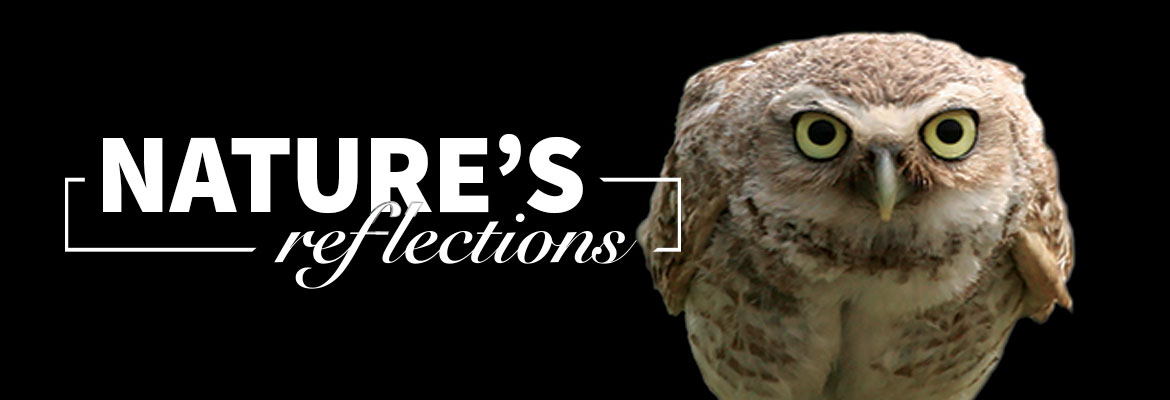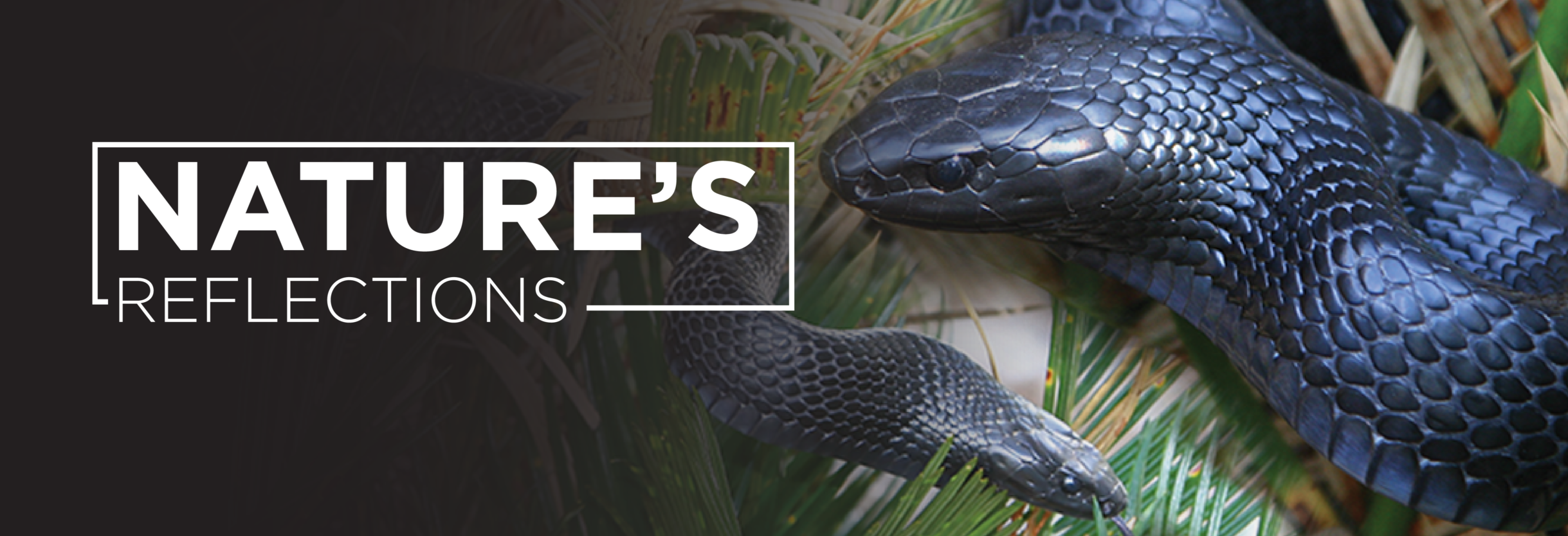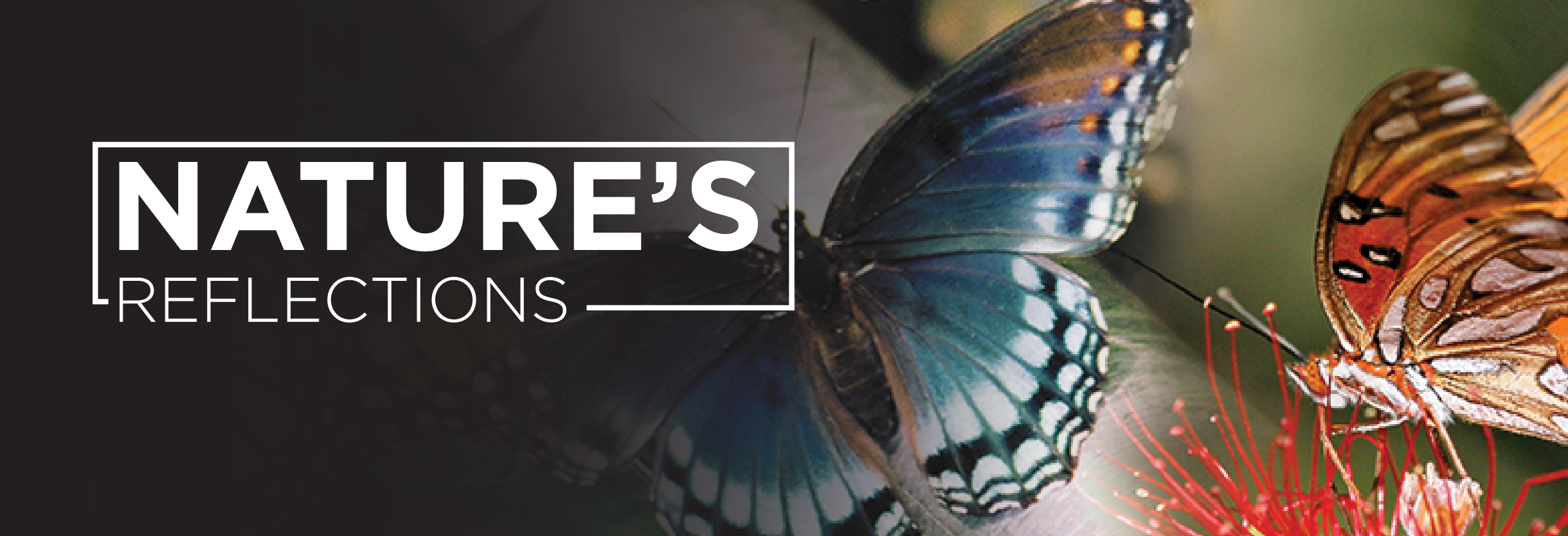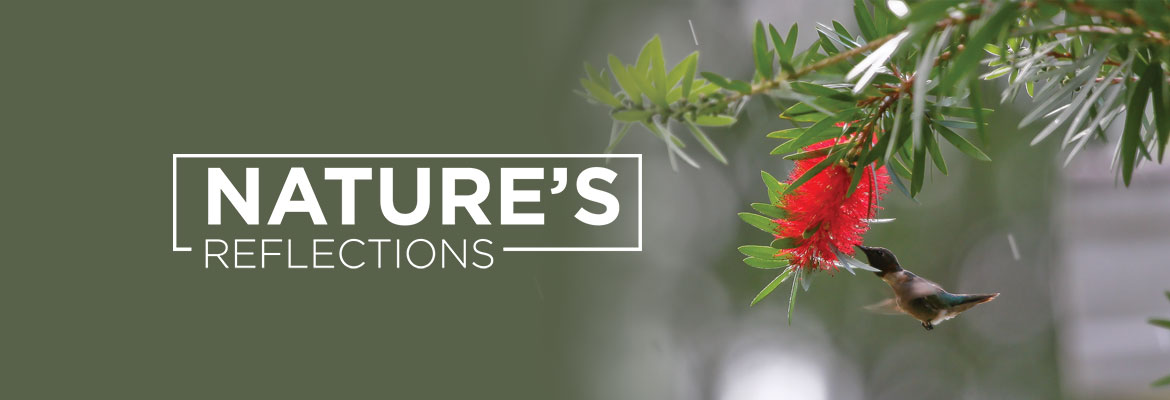Nature’s Reflections – Florida’s Burrowing Owl
A pint-sized owl that’s active both day and night
The burrowing owl (Athene cunicularia floridana) is one of our smallest owls, standing just nine inches tall with a wingspan of 21 inches. Unlike other owls, this owl is a ground dweller, preferring open fields and prairie-type areas well away from trees. It spends most of its time on the ground foraging or guarding its burrow which is where it gets its name. Camouflaged brown plumage helps it blend into its surroundings. It has bright yellow eyes, but no ear tufts and longer legs. This raptor needs open fields and short, herbaceous ground cover, like pastures, golf courses, or agricultural fields. It can be spotted during the daytime standing erect and on guard at the mouth of its burrow or perched on a fence post. Once disturbed, the owl clucks or chatters its displeasure and bobs its head in agitation. Burrowing owls often fly in a wavy, up and down fashion as if negotiating an invisible obstacle course. It can also hover in mid-air – an effective technique used for capturing prey. Florida’s warm climate provides this owl with plenty of its favorite foods: grasshoppers, beetles, mole crickets, small rodents, earthworms, lizards, frogs, toads, snakes, etc.
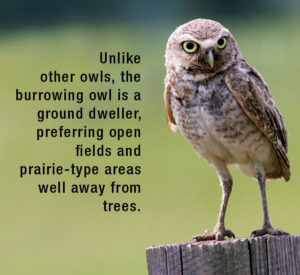 In Florida, burrows are used year-round. While the owls sometimes use gopher tortoise or armadillo burrows, most pairs excavate their own, which may extend four to eight feet underground. Burrows are lined with grass clippings, animal feces and decorative pieces of shell, feathers or trash.
In Florida, burrows are used year-round. While the owls sometimes use gopher tortoise or armadillo burrows, most pairs excavate their own, which may extend four to eight feet underground. Burrows are lined with grass clippings, animal feces and decorative pieces of shell, feathers or trash.
Nesting begins in the fall and peaks in the spring. Four to ten unmarked white eggs are laid over a one-week period. Three to four weeks later, hatchlings are born covered with grayish-white down and eyes closed. Chicks emerge from the burrow after two weeks. Although proficient fliers at six weeks, chicks typically do not leave their parents until about 12 weeks old.
Both the eggs and young are at risk to predators, snakes, opossums, raccoons and skunks. Nests may be lost or
destroyed by construction activities, malicious destruction by people, or by flooding during heavy rains. This owl is classified as “Threatened” by the Florida Fish & Wildlife Commission primarily due to the loss of native habitat. Burrowing owls and their eggs are protected from harassment and/or disturbance by state law and protected by the federal Migratory Bird Treaty Act.
Column & photos by Sandi Staton – sandi.staton@gmail.com
Read the full Nature’s Reflections article in the April 2018 SECO News online.



